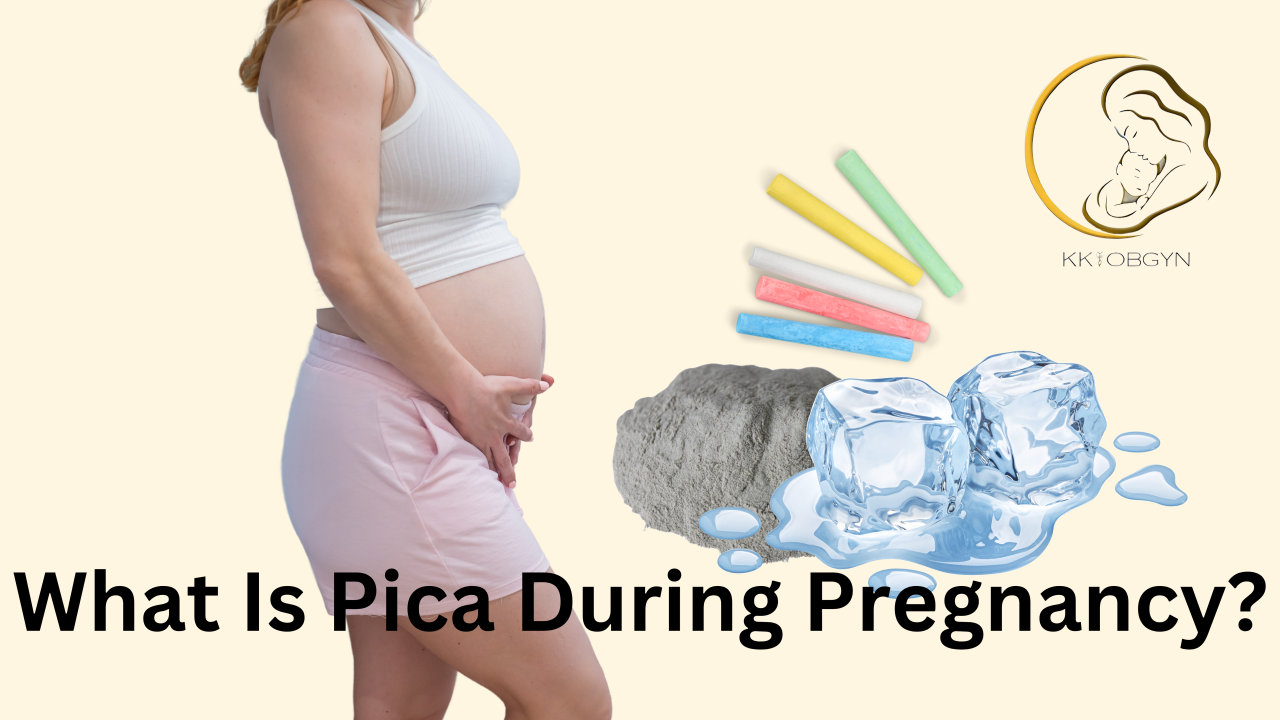Pica is a condition where individuals have an intense craving to eat non-food substances or items that are not typically considered edible. While pica can occur in various situations, it is especially noted during pregnancy. Expecting mothers may find themselves consuming substances like dirt, clay, chalk, starch, or even non-edible items like paint chips or ice. While some instances of pica may be harmless, others can pose health risks for both the mother and the baby. This blog explores the causes, potential risks, and how to manage pica during pregnancy.
What Causes Pica During Pregnancy?
The exact cause of pica during pregnancy is not well understood, but several theories have been proposed to explain why some women develop cravings for non-food substances.
1. Nutritional Deficiencies
One of the most common theories suggests that pica may result from a nutritional deficiency, particularly in minerals such as iron or zinc. Pregnant women who experience iron deficiency anemia, for example, may have an urge to eat substances like clay or dirt, which are thought to somehow alleviate the deficiency. Additionally, other mineral deficiencies might trigger unusual cravings.
2. Hormonal Changes
Pregnancy leads to significant hormonal changes that can affect a woman’s appetite and food preferences. These hormonal fluctuations might make some women more prone to cravings for non-edible items, as the body responds to altered nutritional needs or imbalances.
3. Psychological Factors
Some researchers believe that psychological factors such as stress, anxiety, or even cultural practices may contribute to the development of pica during pregnancy. In certain cultures, the consumption of non-food items may be considered normal or even beneficial, which can influence behavior.
4. Cultural and Social Influences
In some cases, the practice of eating non-food substances is deeply rooted in cultural traditions or beliefs. These traditions may influence pregnant women’s cravings for specific non-edible substances, particularly in certain regions or communities.
Common Substances Eaten During Pica
During pregnancy, women may crave and consume a variety of non-food substances, including but not limited to:
- Dirt/Clay: One of the most common cravings associated with pica, particularly in rural or underdeveloped regions.
- Ice: Known as “pagophagia,” this is one of the more common forms of pica, where pregnant women have an overwhelming desire to chew ice cubes.
- Chalk or Powdered Starch: Some women crave the texture or taste of chalk, baby powder, or even cornstarch.
- Burnt Matches or Ashes: This form of pica is less common but still occurs in certain cases.
- Paint Chips: Consuming paint chips may pose a risk of lead poisoning, especially in homes built before the 1970s, when lead-based paint was more common.
- Hair or Wool: In some cases, women may develop a compulsion to eat fibers or hair.
The Risks of Pica During Pregnancy
While pica may not always have obvious immediate effects, it can lead to several health risks, some of which may endanger both the mother and the baby.
1. Toxicity and Poisoning
Eating non-food substances like paint chips or dirt can expose pregnant women to harmful substances, including heavy metals like lead. Lead poisoning, in particular, can cause a range of health issues, including developmental delays in the baby, birth defects, or even miscarriage.
2. Gastrointestinal Issues
Consuming non-food items can lead to gastrointestinal distress, including constipation, nausea, vomiting, or even intestinal blockages. For example, eating large amounts of clay or dirt can cause digestive discomfort or a blockage in the intestines.
3. Nutritional Imbalance
Although pica may be a response to nutritional deficiencies, it does not provide the essential vitamins and minerals required for a healthy pregnancy. Consuming non-food substances can take the place of more nutritious options, leading to further deficiencies and complications.
4. Increased Risk of Infection
Eating non-edible substances such as dirt, ash, or even raw flour can introduce bacteria or parasites into the body, increasing the risk of infection. These infections could be harmful to both the mother and the baby.
How to Manage Pica During Pregnancy
If you are experiencing pica during pregnancy, it’s important to speak with your healthcare provider to ensure proper management. Here are some tips on how to manage and address pica cravings:
1. Address Nutritional Deficiencies
If pica is linked to nutritional deficiencies, your doctor may recommend supplements or dietary changes. For example, iron supplements may be prescribed to address anemia, while increasing zinc or calcium intake may help curb cravings for certain non-food substances.
2. Consider Psychological Support
If psychological factors such as stress or anxiety are contributing to pica, seeking help from a therapist or counselor may be beneficial. Cognitive behavioral therapy (CBT) and other therapeutic methods can help women address and manage their cravings in a healthier way.
3. Monitor Potential Health Risks
For women who crave substances with potential health risks, such as lead paint chips or dirt, it’s essential to avoid these items and focus on safe alternatives. Regular medical check-ups and screenings for heavy metals may also be necessary if you’ve consumed potentially harmful substances.
4. Stay Hydrated and Nourished
Sometimes pica cravings are exacerbated by dehydration or a lack of essential nutrients. Ensuring that you’re well-hydrated and consuming a balanced diet can help prevent these cravings from becoming overpowering.
5. Replace Harmful Substances with Safe Alternatives
If cravings for items like ice or clay are strong, try replacing them with safe alternatives that may satisfy the craving without causing harm. For example, chewing ice or sucking on frozen fruit could be a healthier option.
Conclusion
Pica during pregnancy is a condition that requires careful management and attention. While it can be a sign of nutritional deficiencies or hormonal changes, it can also pose risks to both the mother’s health and the developing baby. By seeking medical guidance, addressing underlying nutritional needs, and avoiding harmful substances, pregnant women can better manage pica and maintain a healthy pregnancy. If you suspect that you or someone you know is experiencing pica, don’t hesitate to reach out to a healthcare provider to ensure a safe and healthy pregnancy journey.


